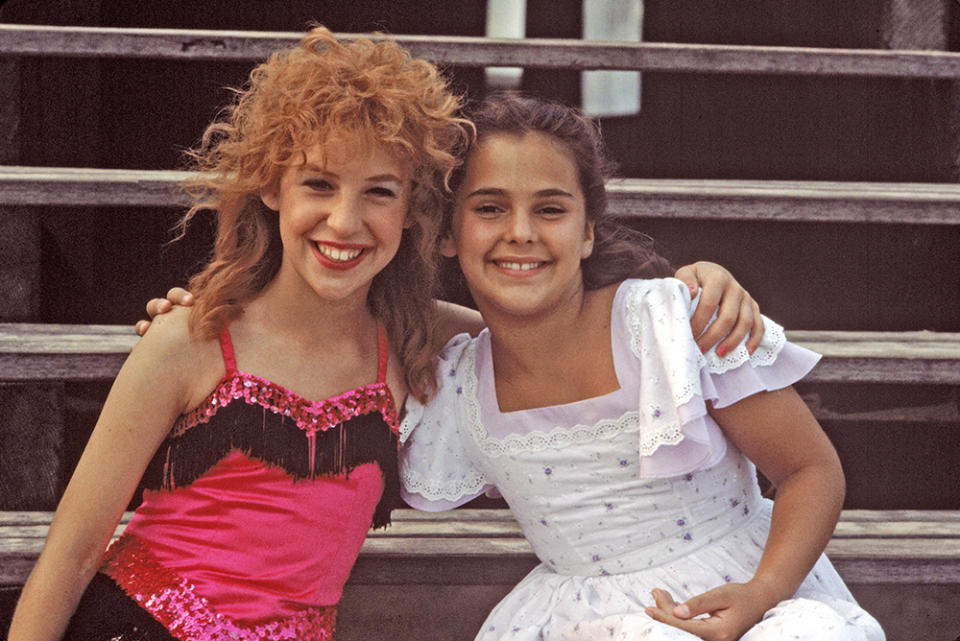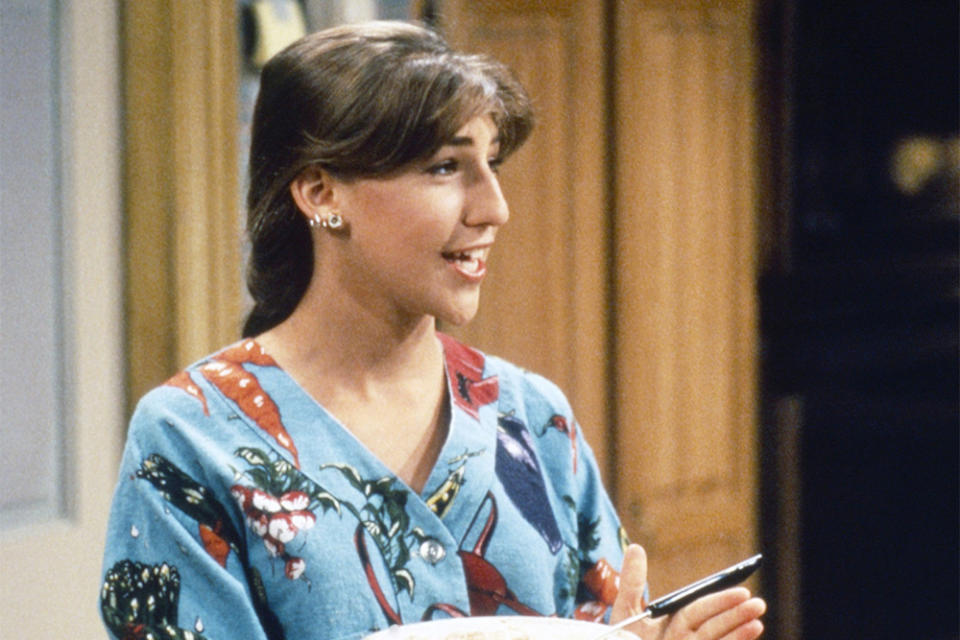Mayim Bialik Reflects on ‘SNL’ Parody Mocking Her ‘Undeniably Jewish’ Nose

I got my nose in around about 4th grade. Before then, I had more of a little button nose. Adorable. But from the time I was 10, the pointy chin I had pretty much since I could crawl was joined by what I think of as a prominent, somewhat regal, nose in the style of what is called a “Roman” nose. (I even saw what looked an awful lot like my exact nose on an ancient statue the first time I went to Rome as a teenager!)
I was an outgoing child who had trouble not talking to other kids during class or flirting with boys. I loved making other kids laugh with jokes and impressions. I didn’t think of myself as unattractive, but I also knew that most boys who I liked didn’t like loud, quirky girls like me who had calluses on their hands from too much time on the monkey bars.
More from Variety
'We All Need to Be Better Listeners': Lyor Cohen on Antisemitism in the Entertainment Business
New Mandate Aims to Share More Jewish Stories With the World: 'The Gifts of the Jews are Many'
I entered middle school and began acting professionally, and my parents told me as encouragement that I looked like two very famous Jewish women: Barbra Streisand and Bette Midler, both known for having prominent noses and successful careers despite that. I saw myself as a character actress with potential, and the agents my parents sent my photo to in hopes that they would represent me were intrigued by my eccentric profile, my raspy voice and my ability to behave obediently among adults and memorize scripts.
I had little luck landing “leading” roles but was cast as the quirky friend or nemesis in a lot of sitcoms I appeared in, such as “Webster” and “The Facts of Life.” I’m sure there are many reasons I didn’t land a leading role besides my profile, but the truth is that girls with prominent noses were not cast in leading roles in the 1980s. We also didn’t get cast in commercials, since what they wanted in commercials was “All-American” kids. I didn’t capture that vision.
A year after I started acting, I was cast as — of all things — the young Bette Midler in “Beaches.” My mother gloated and with good reason: my “unusual” looks paid off and I was catapulted into a world of paparazzi, notoriety and the opportunity to star in my own TV show, despite my quirky looks. Don Reo fashioned “Blossom” around me: a girl smart enough to know not to be thrown off course by mean kids, but real enough to be an accurate portrait of an adolescent in conflict with an increasingly complicated inner and outer world.

When “Blossom” premiered, I was 14 years old. An early review of this show in a prominent publication described the lack of “sense” that my face made to him; the shape of my face confused this critic. He said that my features did not seem to match one another. I was essentially being described as a Frankenstein of a teenager. At the time, I’m not going to tell you it didn’t hurt. Of course it did. I was relatively new to the industry so I didn’t have years of experience understanding the intricacies of critics and the value of not giving a shit (something I still am not good at). I was a sensitive child. “Don’t listen to reviewers,” my father said. “This critic is an asshole,” my mother said.
After that, my parents did their best to shield me from other reviews but, by and large, people were kind to me. “Blossom” was seen as a favorable component of ‘90s sitcom pop culture — but I never forgot that review and probably never will.
Mid-“Blossom” run, MAD magazine did a parody of our show. I was scared to look at it at first, since I had grown up reading MAD’s parodies, and I knew how brutal they could be with their parodies of mainstream pop culture. In true MAD fashion, they mocked every single thing about both me and our entire show. I cried a little as I looked at it, but my father reminded me that parody is the sincerest form of flattery next to imitation. I swallowed my tears, and sent a picture of me holding the issue to Mad’s editor, along with a photo of me holding a copy of the first-ever issue of Mad magazine, which my father had kept as a prized possession from his youth.
And then a short time later, it was “Saturday Night Live’s” turn. In the ‘90s, you had really “made it” if “SNL” parodied your show. It meant you were a significant enough part of culture to merit that kind of mockery, and as an “SNL” fan for my entire life, I was so excited. And then I watched it.
The actress portraying me was dancing and mugging for the camera and she was hilarious. But. She wore a prosthetic nose. In order to truly convey that she was “Blossom,” she wore a fake, big nose. I don’t know if it was significantly larger than my real nose and I don’t care to remember. I remember that it struck me as odd. And it confused me. No one else on the show was parodied for their features. In MAD magazine, everyone is caricatured, but in this rendition of parody, it was just me that was singled out. More specifically, it was my nose.

I never thought to talk about it and mostly I tried to forget it. I hoped no one noticed. All of my friends at high school watched “SNL.” It wasn’t subtle. They would all see it and I felt ashamed.
Cut to 40 years later and I started hearing people talk about “Jewface” and, more recently, about Bradley Cooper’s Leonard Bernstein nose. And I started scrutinizing the photos of Bradley and Leonard and wondering if it was necessary. I don’t know how I feel. I don’t know if it matters how I feel. I assume it matters how his family feels. But maybe it doesn’t?
Girls all over the world used to tell me that they had never seen a Jewish girl like me on TV before they saw me on “Blossom.” Many said they knew I was Jewish and it made them proud to be. That was so touching to me, and it still is.
I wonder how those girls felt when they saw an actress playing me with a comically prosthetic nose. I wonder if that’s different from Bradley Cooper playing a famous person. Does it matter? I wonder what that critic thought when he saw the “SNL” parody. Did he feel vindicated? Did he know that by criticizing the features I inherited from my mixed Eastern European-Ashkenazi past that he was inadvertently accusing that admixture of creating something less than perfect?
I’ve had many conversations with myself about my nose in the past 40 years. I have not always loved it, but I also have never wanted to change it. The fact that I live with it publicly makes it no less complicated when I compare it to girls whose nose at 9 is their nose at 19 and 29 and 39 … I have come to see my face as distinctly mine as given to me from G-d. My genetic makeup is mine alone, and also, it is the combination of cultures shoved together after the Holocaust spilled so many of us out on the shores of Ellis Island. My nose is undeniably Jewish, and I am as well. Is it because of my nose? Perhaps. But I don’t have to know because we will always be one and the same.
Mayim Bialik is an actor and author.
This article is part of Variety’s Antisemitism and Hollywood package and was written before October.
Best of Variety
Sign up for Variety’s Newsletter. For the latest news, follow us on Facebook, Twitter, and Instagram.


